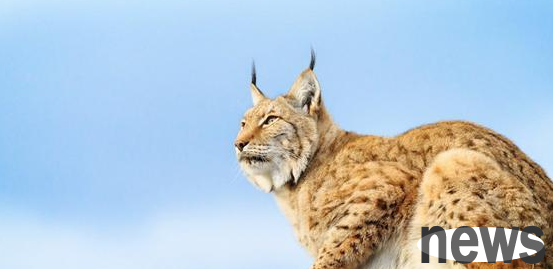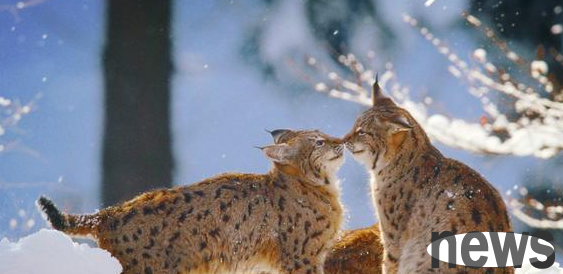A rare animal is found in Ali, Tibet. It looks like a cat and a tiger. It can kill one without a fixed house.
Tibet is the roof of the world, and Ngari is the roof of the roof of the world. Kailash, located in Ngari, soars into the sky and is so majestic that it is known as the "King of Sacred Mountains"; Manasarovar is located to the south of Mount Kailash, with transparent lake water and beautiful scenery.
When the Tibet Biological Imaging Survey Agency conducted an imaging survey of organisms near Kailash and Manasarovar in the Ngari region of Tibet, it discovered many rare birds, insects, amphibians and reptiles. What everyone never expected was that this survey discovered a rare animal - the lynx.

This survey discovery proves that there are also lynx populations living in the Ngari area of Tibet. Lynx is a rare cat and a national second-level protected animal. It often lives in cold mountainous areas. However, it does not have a fixed "house" to live in, but likes to wander around.
01 Like a cat and a tiger, there are two tufts of hair on the tips of the ears, and the spots on the body are good for concealment and foraging.
The lynx looks like a cat, but is not as gentle as a cat. It is much larger than a cat, but a medium-sized beast. An adult lynx weighs about 15-30 kilograms, has a body length of 80-130 cm, and a tail length of 16-23 cm. Most small animals can't help but tremble when they see it.
The lynx has a thick body, long and thick limbs, but is very strong; its tail is very short, and there are black hairs at the end of the tail. The fur on the lynx's body is light brown, earthy brown, light gray brown or hemp brown, or gray and white mixed with light brown. The color of the back is darker, reddish brown, and the middle part of the hair is dark; the abdomen is light yellowish white.

The body is dotted with dark spots or small stripes, which makes it look like a tiger. These spots are useful and help it hide when it encounters danger; they also help it find food.
The most interesting thing is that there are two tufts of black standing tufts on the tips of the lynx's ears, making it look more majestic. This is also its most distinctive shape. A pair of brown eyes, hidden under the hair, are sharp and dangerous. They become even sharper when they see prey. The ear shells and bristles can move in the direction of the sound source at any time and have the function of collecting sound waves. If the bristles are lost, its hearing will be affected.
The lynx has long drooping hairs on its cheeks, with 2-3 rows of obvious brown-black vertical stripes, and its abdominal hair is also very long. The lynx's hair is long and dense. In winter, its large paws are covered with long and dense fur to protect it from the cold. When it moves through deep snow, the fur on its paws acts like "snow boots."

02 Wandering around without a fixed "house", they can stay still for several days, or they can run for more than ten kilometers without stopping.
It is understood that lynxes are cold-loving animals and are distributed in mountainous areas in Tibet, Xinjiang, Qinghai, Gansu, Inner Mongolia, Hebei and other places in my country. However, now the wild and rare lynxes in many places have disappeared. Perhaps because the living environment has changed, lynxes are rarely seen. Therefore, it is very precious to be able to capture images of lynx in the Ngari area of Tibet.
Lynx, a rare animal that looks like a cat and a tiger, lives in the cold mountainous areas. It naturally loves freedom and likes to be alone. It uses rock holes and tree holes as its residence, but it does not always live in one place and does not have a fixed "house". Its hearing and vision are very developed. Not only can it run fast, it can also swim and climb trees. It is a little expert in sports.

The lynx is a nocturnal hunter. It will lazily bask in the sun on the rocks during the day, and start hunting at night. It is very resistant to hunger and is not afraid of severe cold. It can lie still in one place for several days without moving, and it can also run for more than ten kilometers without stopping. It has very good endurance. If the animal world held a marathon, would it win the championship?
They are most active during the morning and dusk periods of the day, and the scope of their activities depends on the abundance of food. Although it does not have a fixed "house" to live in, it has a strong sense of territory. It has territory-occupying behavior and a fixed place for excretion.

03 Lynx have a way of catching prey. In winter, they will "refrigerate" leftover food and can kill a male wolf.
Lynx generally feed on rats, hares, etc., and sometimes hunt small wild boars and fallow deer, marmots, wild pigeons, pheasants and other birds. In addition to hunting small animals, they also like to hunt medium and large mammals such as roe deer and musk deer.
In nature, in order to survive, every creature has its own survival skills. Lynx pays attention to methods when catching prey. They will catch rocks and big trees to hide themselves, and lie in wait for the prey to enter its hunting range. It will lie dormant in one place for a long time, and when prey approaches, it will jump out unexpectedly to catch it.
If it cannot successfully catch the prey in one fell swoop, it will not chase after it, but will continue to lie dormant, waiting patiently for the next prey to arrive until it catches food.

According to expert field observations, when food is scarce in winter, clever lynx will "refrigerator" the prey they catch, eat the remaining meat, bury it in the snow, and then take it out to eat when they are hungry. Although the lynx is very hungry, it needs to consume 1-2.5 kilograms of meat every day.
The lynx is as brave as the tiger, but it also has animals that it is afraid of. Snow leopards, bears and other large beasts are the natural enemies of lynx. If you accidentally encounter a pack of wolves, you will be chased and surrounded, making it difficult to escape and become the food of the wolves. However, lynx are cunning and cautious in nature. When in danger, they will flee to trees to take shelter, and they will also lie down on the ground and pretend to be dead.

Although lynx are afraid of being attacked by wolves, there are also records of lynx killing a wolf. From the image recorded by an infrared camera, we can see that a male wolf encountered a lynx and came forward to provoke him, but the lynx remained unmoved. After several attempts, the male wolf was about to leave, but was suddenly attacked by a lynx...
Soon after, forest protection personnel found a dead male wolf. Judging from the tooth marks on its body, it was very likely that it died from a lynx.. It can be seen from this that lynx can beat wolves of average size in one-on-one situations.
End: Lynx or wolf, who is more powerful?
Lynxes are cunning and cautious. When catching prey, they have their own methods. They lie dormant and wait for the prey to be captured, and they will not chase after them. Wolves also pay attention to methods when catching prey and will not pursue recklessly. Lynx are afraid of being attacked by wolves, but when fighting alone, they may not lose. In your opinion, which one is more powerful, the lynx or the wolf?















